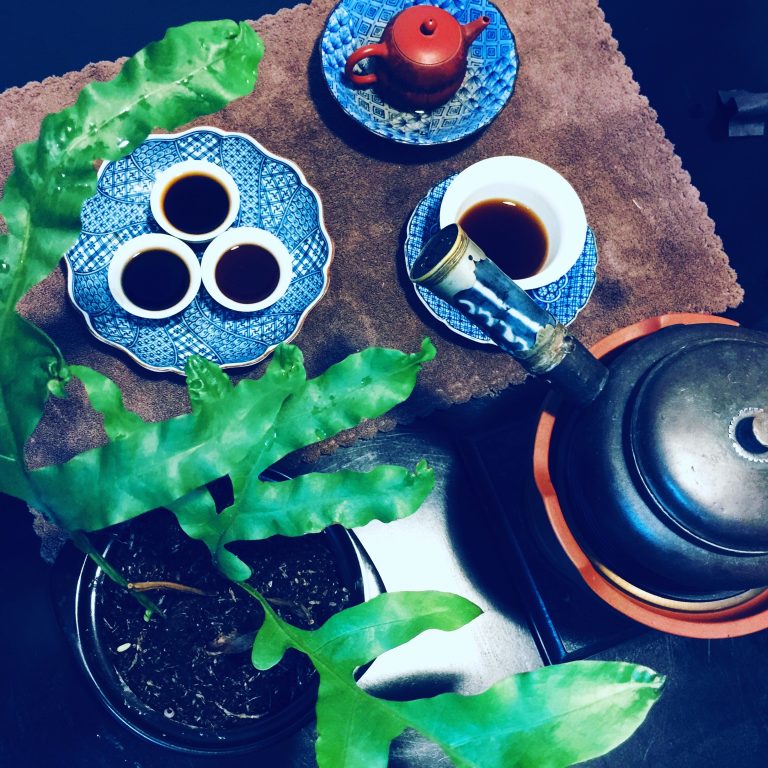It is difficult for every tea drinkers to describe the “good” taste or “bad” taste when drinking tea. Sensory Tea is very difficult to describe. So I often hear two most popular words, “bitter” and “sweet”. That is too general while the tea flavors world is very rich.
This is a “dictionary” of adjectives describes the following flavors. So it will help you overcome the general and you can catch of the specific taste of each tea. This also make your tea world enrich.
Remember that there is no independent flavor or strict boundary between the words. The taste is always complex and sometimes the words also overlap.
We evaluate sensory tea following three aspects of tea: aroma, taste and infusion of tea.
Aroma
The qualities of tea are perceived by the nose. You can also enjoy the tea in the tea infusion and tea fiber in the kettle. I often enjoy the smell of tea when poured out.
- Herbal scent: green rice smell, grass smell, boiled vegetables smell, dried leaves smell,…
- Marine scent: fishy smell, seaweed smell, iodine smell
- Flowers smell
- Fruits smell
- Spices: cinnamon, licorice ..
- Dairy butter smell
- Sweet smell: vanilla, honey, pollen
- Sweetener Smell: chocolate, caramel, jam
- Bushes smell: humus smell, humid leaf, moss …
- Earthy odor: mold, damp soil, dust, stones
- Wood smell
- Skin odor: tanning, sweat …
- Burning smell: roasted coffee, toast
- Smoke smell
- Mineral odor
Taste
There are 5 basic tastes
- Sweet (tongue head)
- Salty (middle tongue)
- Sour (both sides)
- Bitter (tongue tail)
- Umami: meat smell
Infusion
This is one of the most delicate features, but ordinary people ofter overlook. This is also a clear criterion for the “good” and “bad” tea
- Acrid: taste by tanin, sometimes also accompanied by dry taste
- Full: describe the tea with a good texture with a certain thickness
- Sticky: a sense of “fullness” in the mouth. The taste also remains in the oral cavity
- Flexible: describes the structure of water with adhesive
- Chalk: Describe the light taste with a feeling like a smooth powder in the mouth
- Intense: feeling strong in the mouth, usually due to poor quality tea or soaked for too long
- Wallowing: Tea has good taste. Water is also thick.
- Round: tea flavor fills the cavity, almost sticky
- Silky: describe infusion slightly tough, slightly “greasy”, smooth as silk
- Smooth: Tea has a bit acrid but not uncomfortable taste
- Hard: mainly about tannin, also full of oral cavity
- Floppy: Description of mild tea
- Thick: tea infusion likes oil or cream
- Greasy: Tea infusion rounds in the mouth. It is also slightly fat
- Velvet: Water is a bit thick, like velvet
- Fluid: Tea doesn’t has any tastes, even is not sticky
Other Descriptions Of Tea Tasting
- Full: describe the tea is full, round. Taste is also sticky in mouth
- Rich in flavour: Description of rich tea variety of flavor
- Thin in flavour: Description of the original fragrance is very easy to deodorize
- Balance: Smoothness in taste and also texture of fine tea.
- Incense: describes some of the too strong flavors in tea
- Long / short taste: the taste stays long in the oral cavity after tasting
To discover the magical richness of the flavors, remember to know how to make tea.



